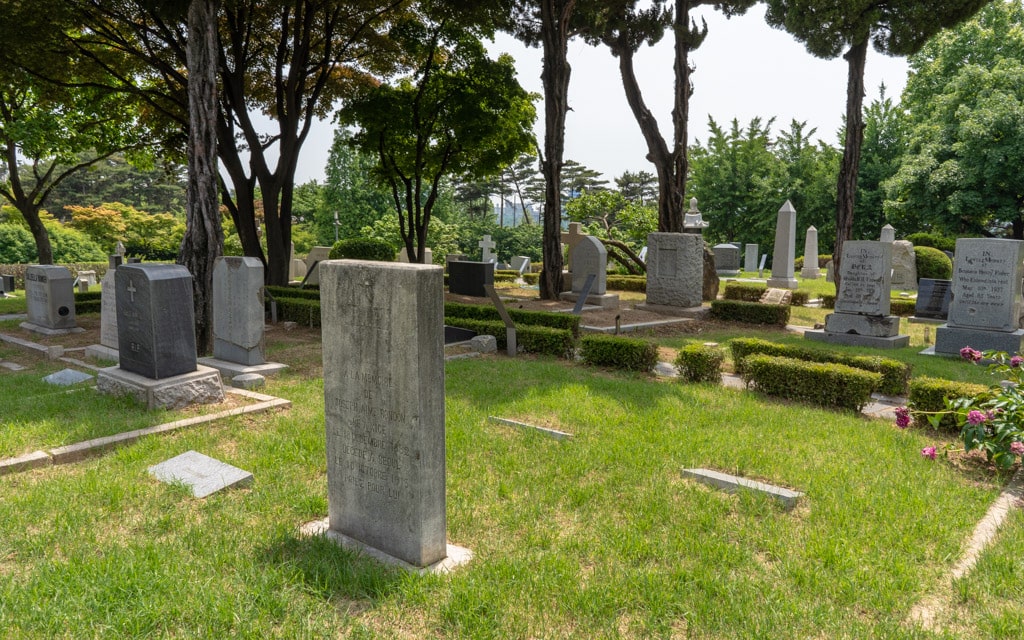
Yanghwajin Foreign Missionary Cemetery is an international cemetery designated by King Gojong that holds the tombs and graves of many foreign missionaries. The cemetery is also known as Hapjeong-dong International Cemetery.
The need for a foreign cemetery in Seoul was apparent in July, 1890 after the death of John Heron, a Presbyterian minister. Up until this point, foreigners were often buried at Chemulpo Foreigners’ Cemetery in Incheon.
A medical missionary, Dr. Horace Allen, searched and found a place for a cemetery. He obtained the rights to the land on the banks of the Han River. He called the cemetery Yanghwajin after the name of an old ferry crossing. In 1885, Dr. Allen became the director of Gwanghyewon, the first western style hospital in Korea. Dr. Allen died in 1932 and is buried in this cemetery.
A quote on the tomb of Homer Hulbert (1863-1949) reads “I would rather be buried in Korea than in Westminster Abbey.” He was an independence activist from Japan and today is highly respected.
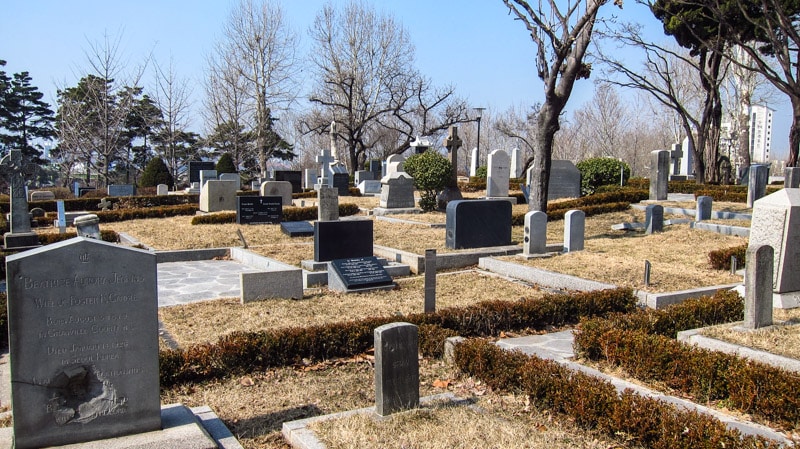
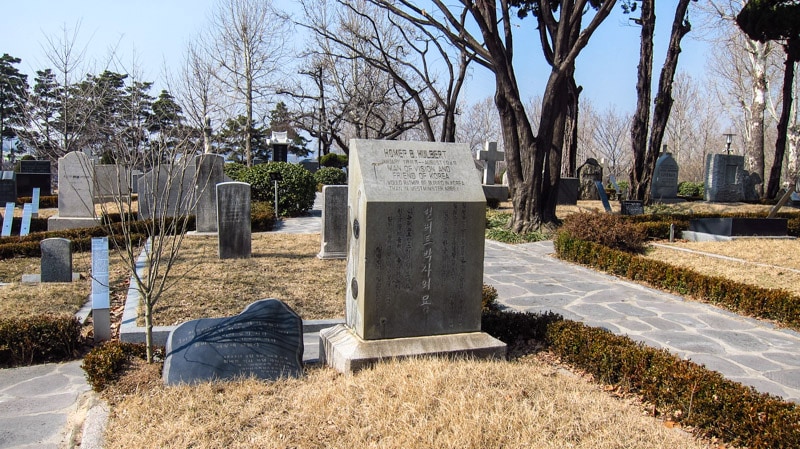
Many of the tombstones were damaged during the Korean War (1950-1953). Evidence of this damage still exists today as members of the foreign community decided against repairing many of the fractured tombs. The designs of the tombs found here are western in style, which is unique for Korea.
It is estimated that there are 376 people buried here (221 adults and 133 children). There are also an additional 23 unmarked graves. Buried here are missionaries from all over the world including the United States, Australia, Japan, Korea, Russia, and Europe.
On the other side of Yanghwajin Foreign Missionary Cemetery is the Jeoldusan Martyr’s Shrine.
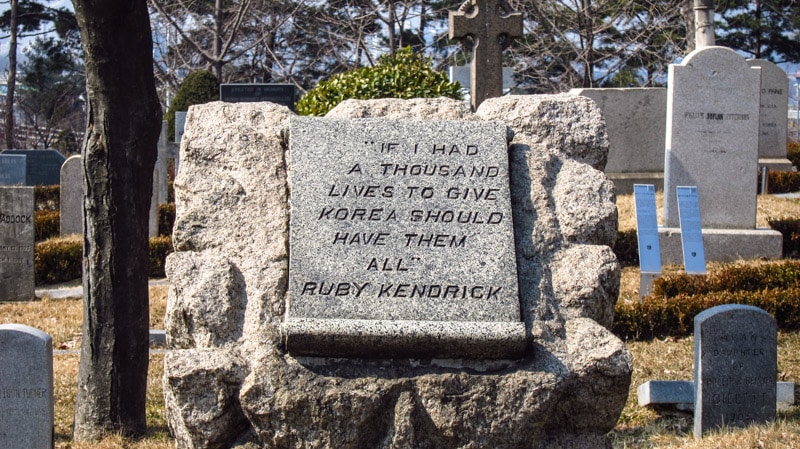
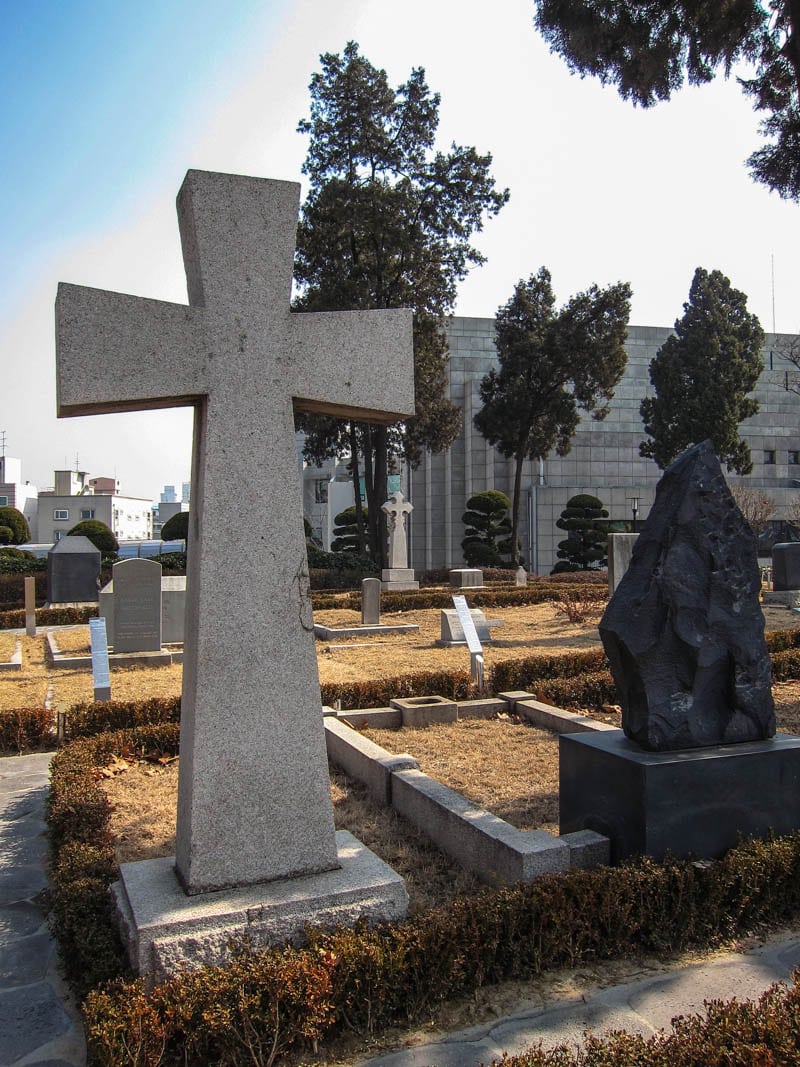
Table of Contents
Yanghwajin Foreign Missionary Cemetery Hours
Monday-Saturday : 10:00-17:00
Free guided tours in English are available Monday through Saturday at 10:00, 11:30, 14:00, and 15:30. Reservations are required and can be made at https://yanghwajin.net/guide/reservation_en.php.
Closed on Sundays
Admission
FreeHow to get to Yanghwajin Foreign Missionary Cemetery
Take Subway Line 2 or Line 6 to Hapjeong Station (Exit 7)
Map
Additional Resources
Viator
Viator is a popular online platform that helps travelers book tours, activities, and unique experiences worldwide, including in Seoul. It connects users with a wide selection of options, such as sightseeing tours, cultural events, outdoor adventures, and more, all offered by local providers. Travel easily, with free cancellation and flexible payment options, making Viator an excellent choice for stress-free tour booking.
Book Recommendations
While The Seoul Guide provides plenty of information about traveling to Seoul, sometimes it helps to bring a book with you on your journey. Want to visit Gwangjang Market, hike Bukhansan National Park, visit an ancient palace, or sing karaoke all night long? The book I always recommend is Fodor's Seoul, which provides expert recommendations including sights to see, restaurant reviews, maps, and essential trip-planning information for everything related to Seoul.
Learn more about book recommendations
Rakuten
Save money while exploring Seoul with Rakuten cashback program. By booking hotels through Rakuten, visitors can earn cashback rewards and enjoy significant savings. Exclusive partnerships and deals make stays in Seoul more affordable, freeing up funds for attractions, dining, and other experiences. I use Rakuten for cashback on all of my hotel stays in Seoul.
If you sign up using the link below, you will get $30 cashback after your first purchase over $30.
Klook
Klook is a reliable online platform offering discounted tickets and reservations for attractions and services in Seoul. It covers theme parks, museums, transportation, WiFi, tours, and more. Travelers can save time and money by booking through Klook's user-friendly interface, with secure transactions and helpful customer support.
If you sign up using the link below, you will get $5 off your first order.
Learn more about KlookLast Updated on Jul 13, 2023